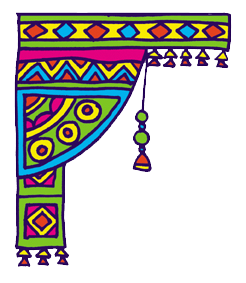
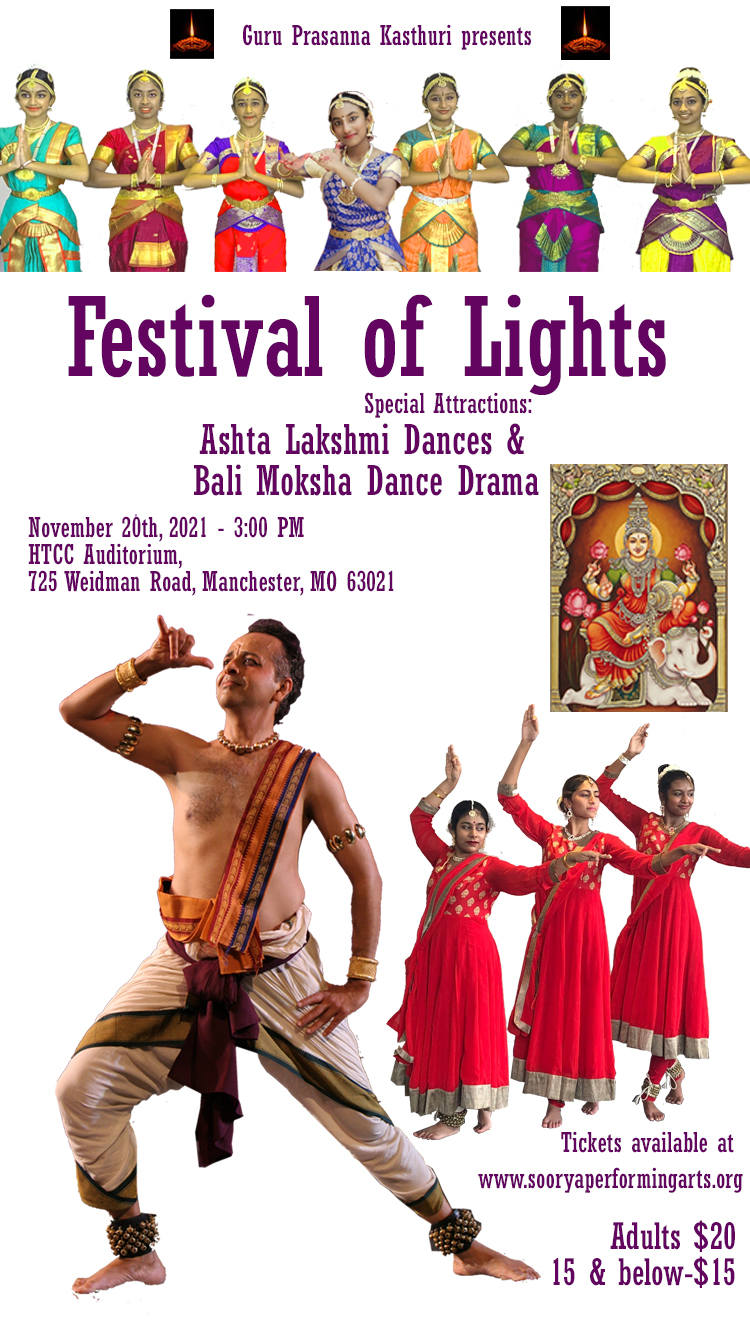
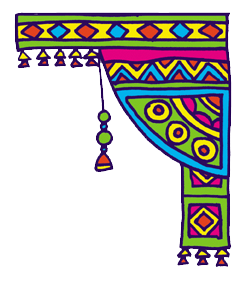
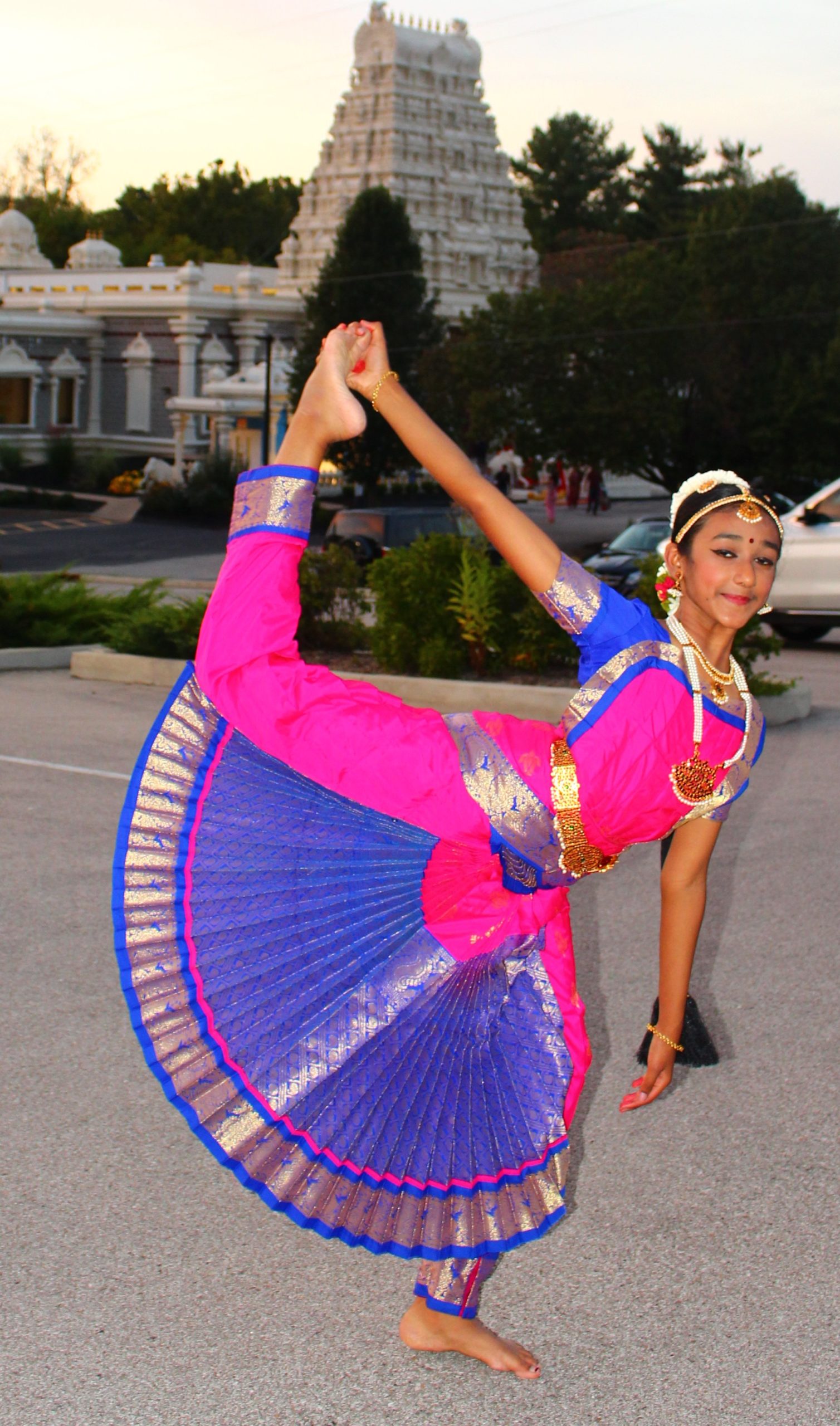
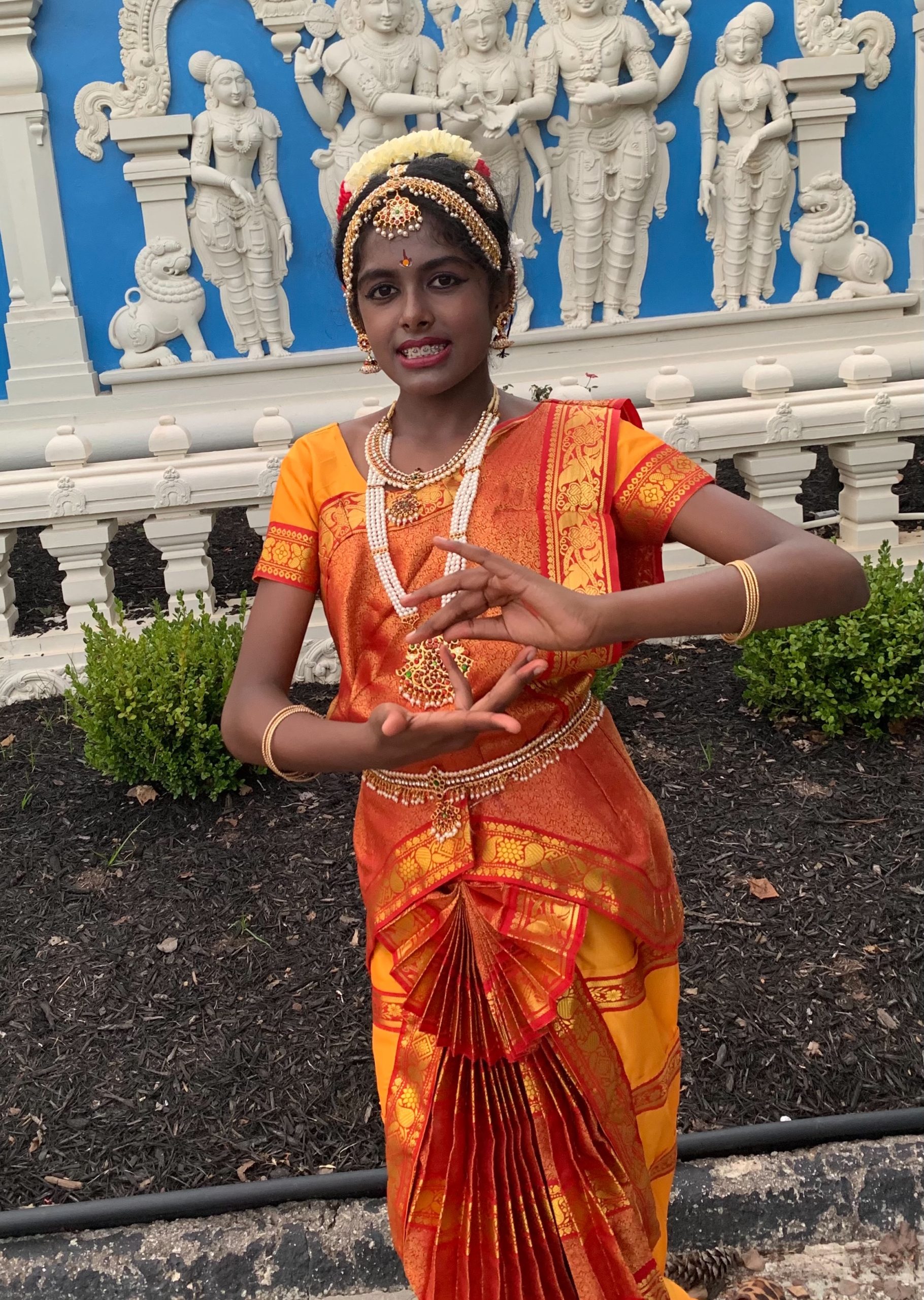
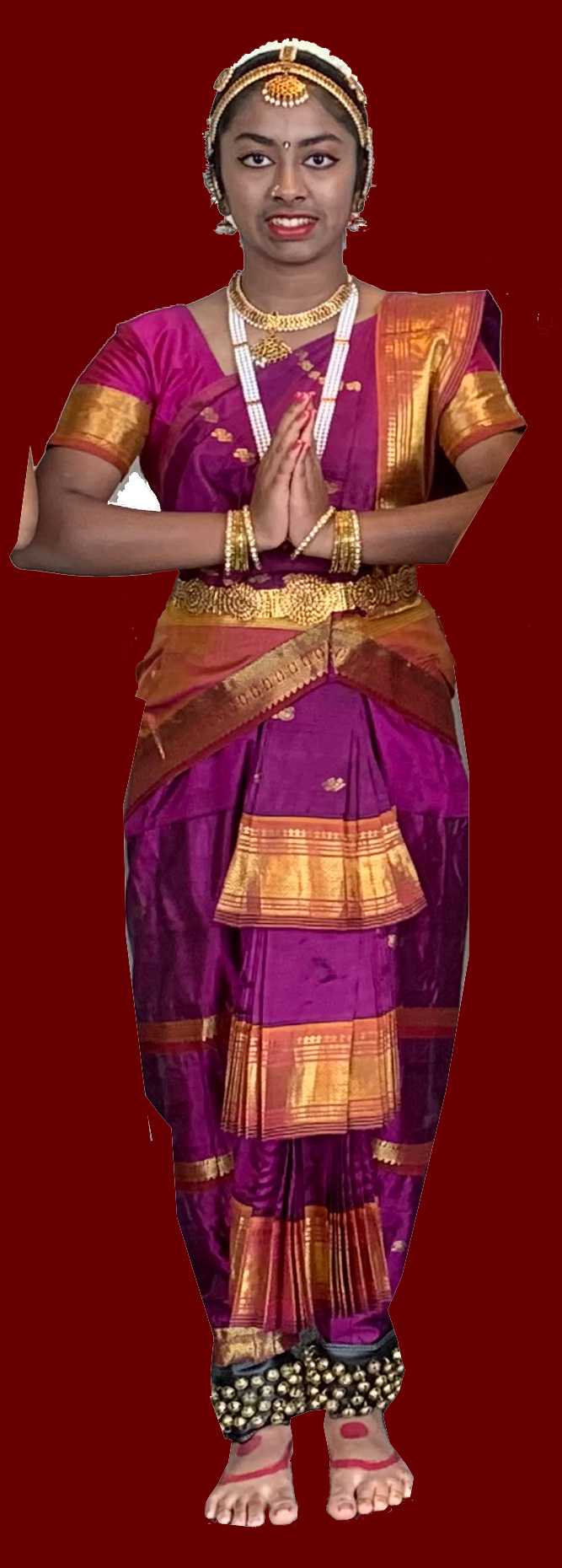
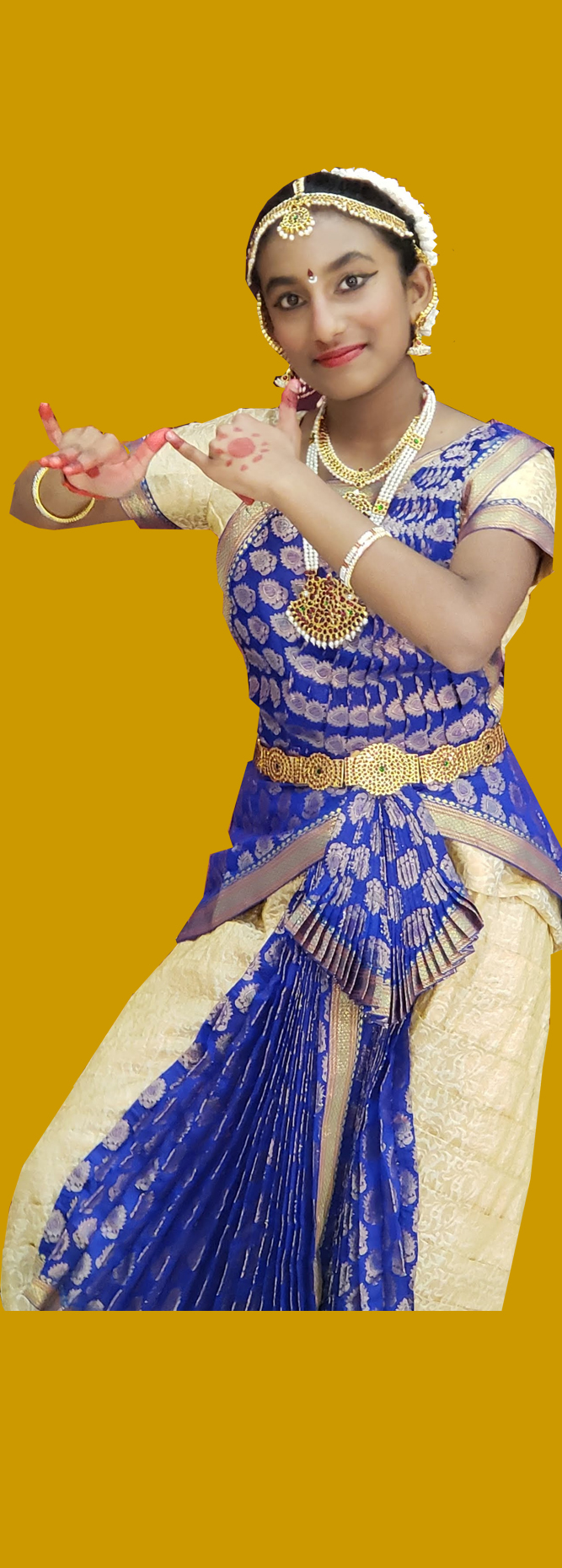
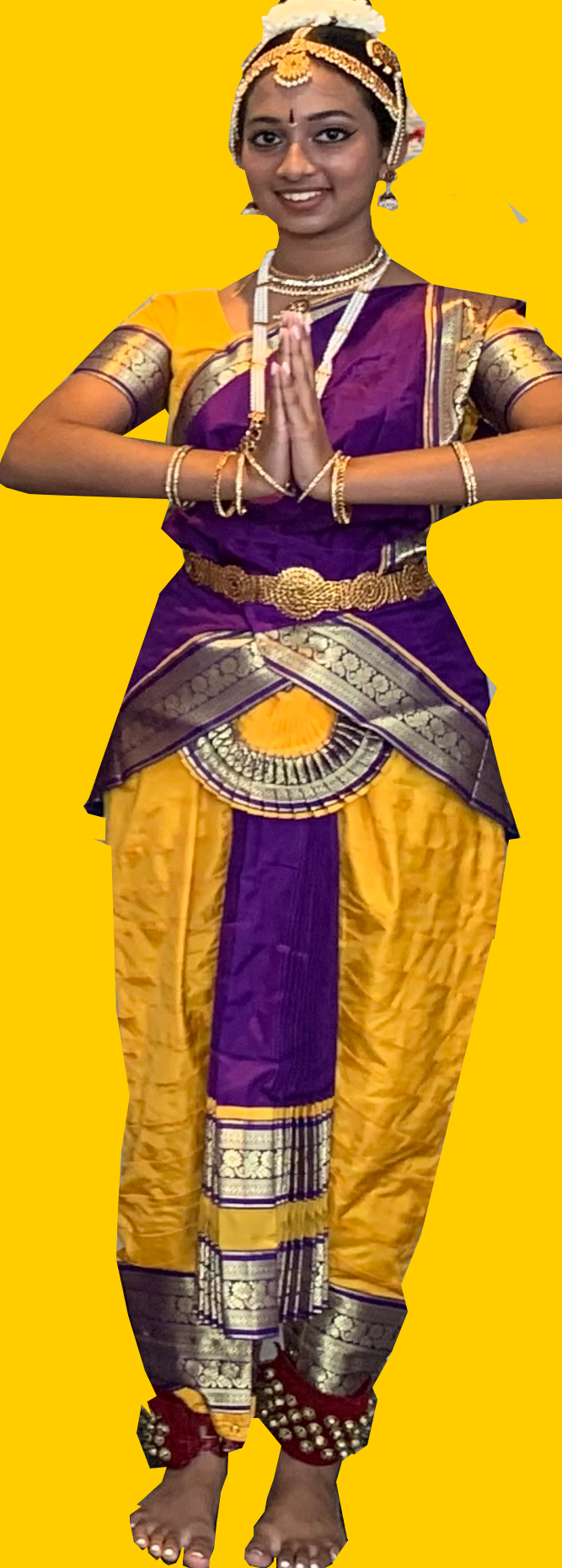
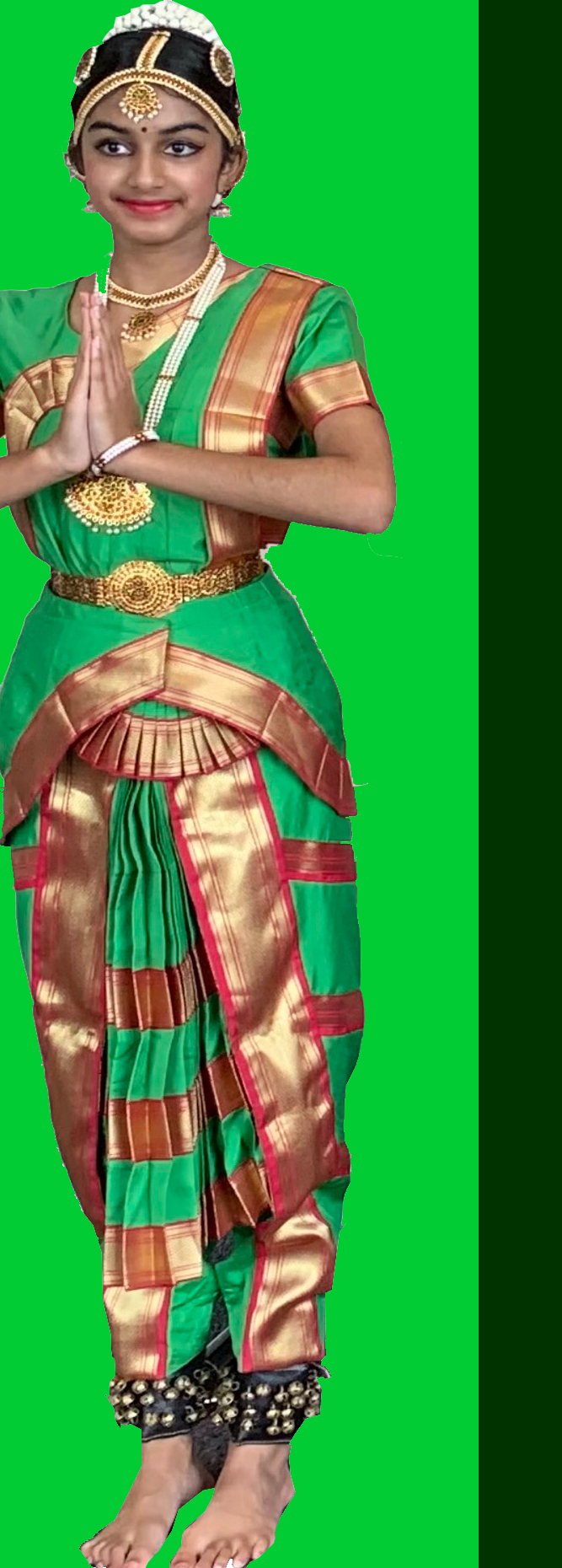
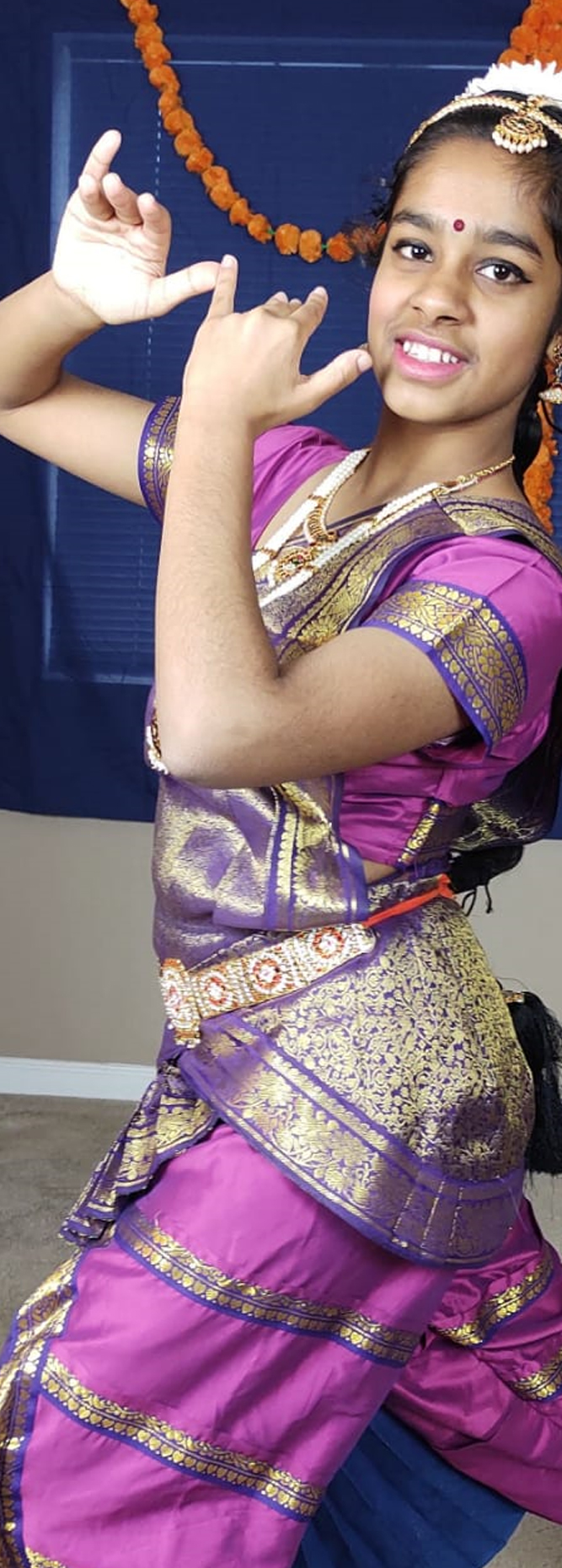
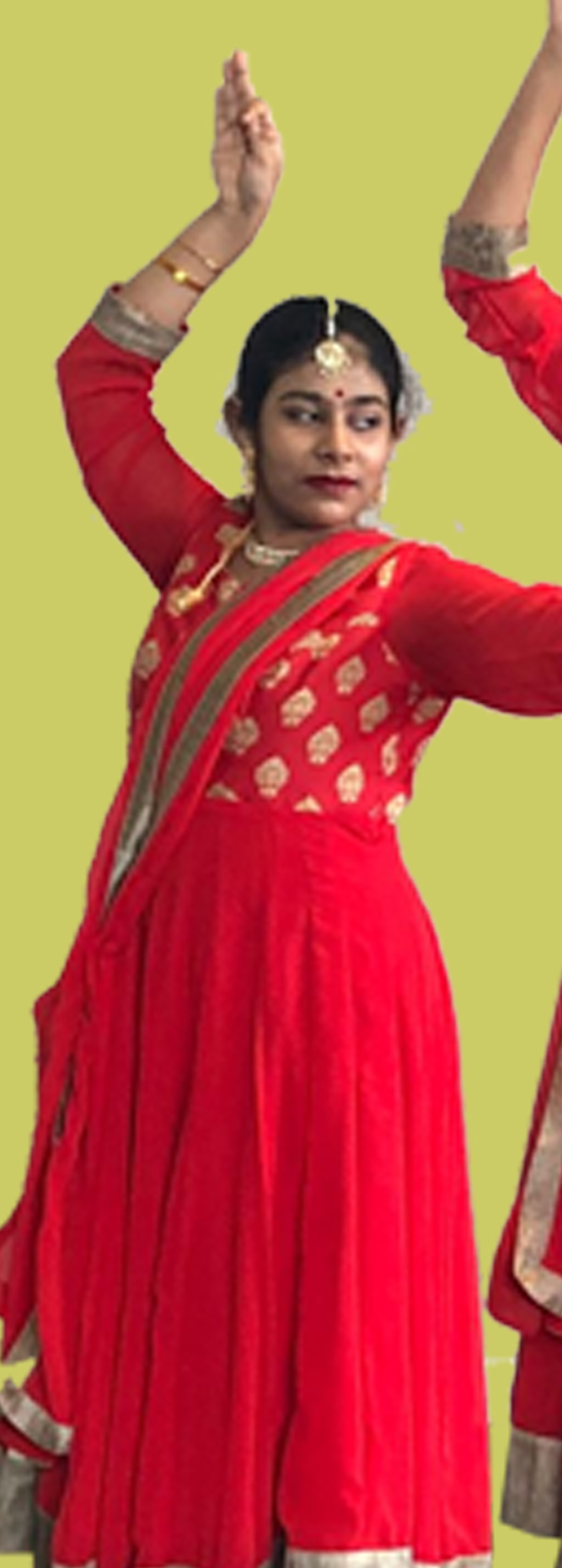
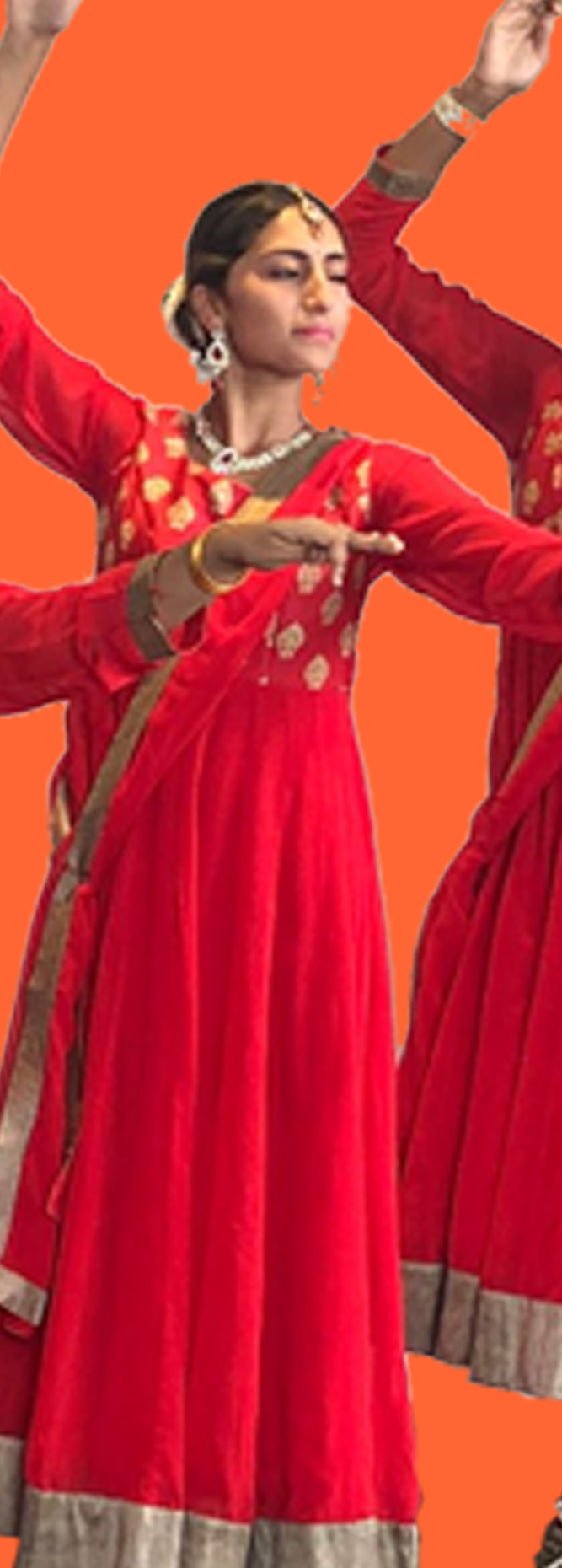
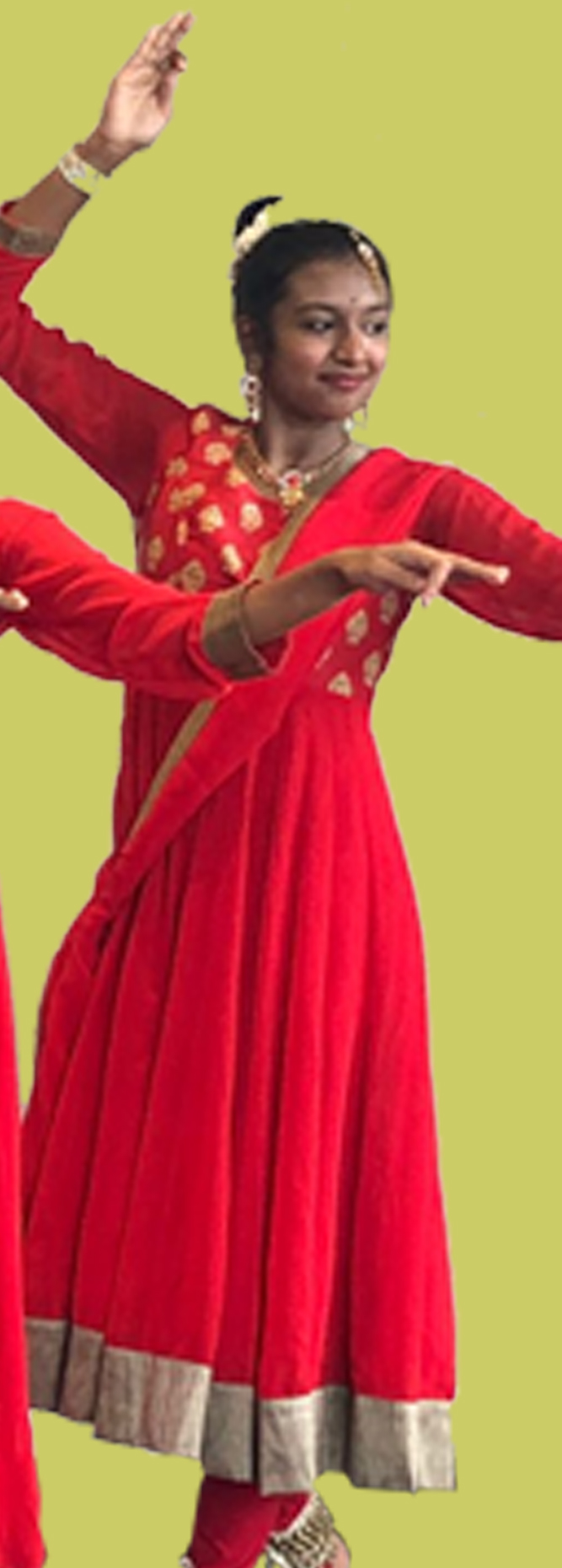
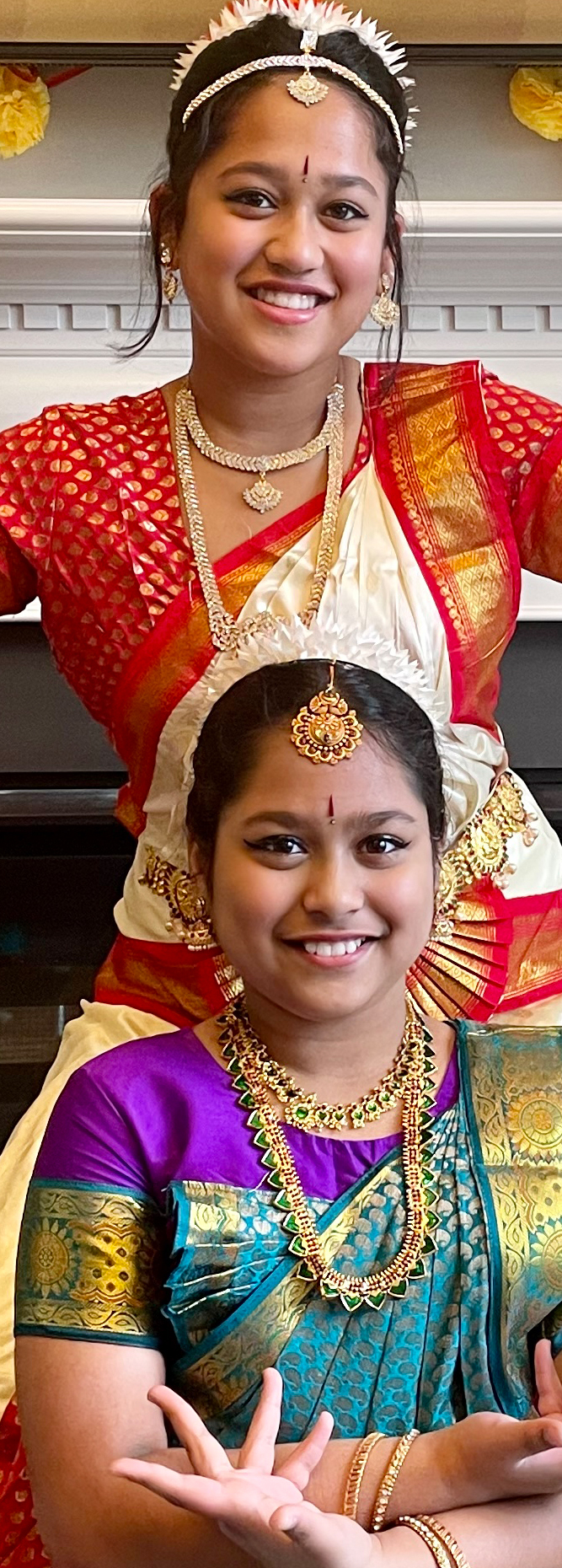
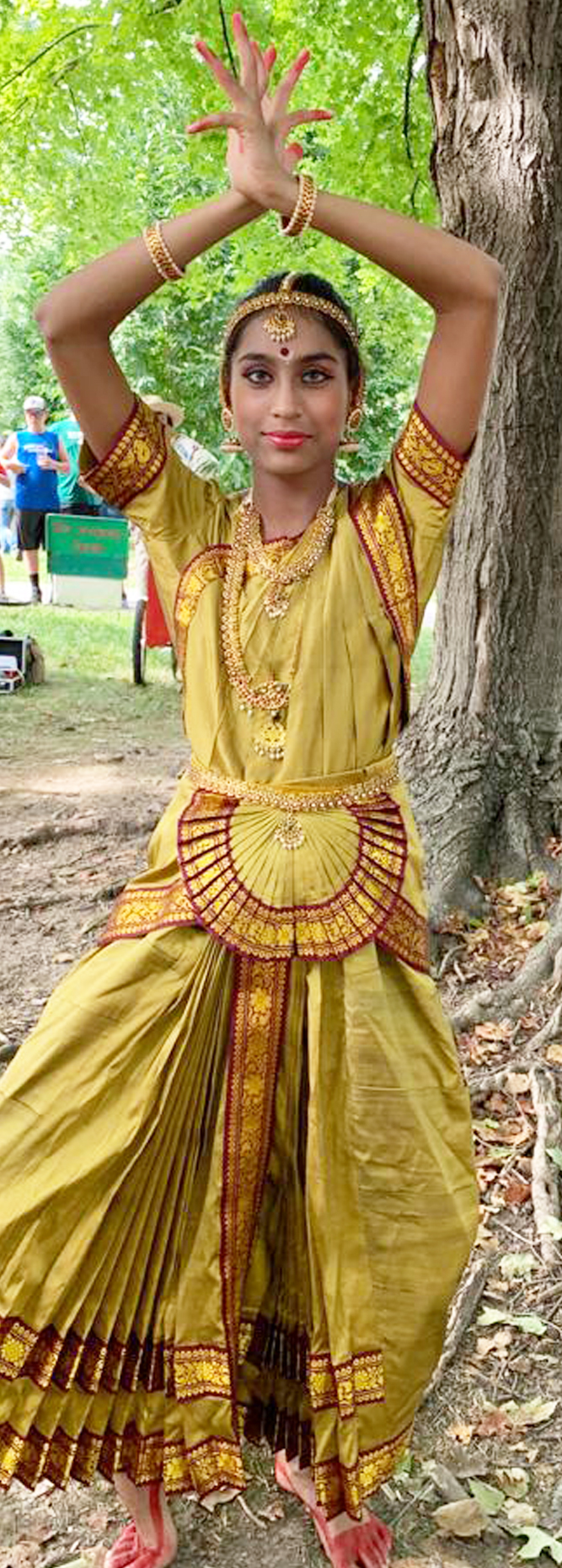
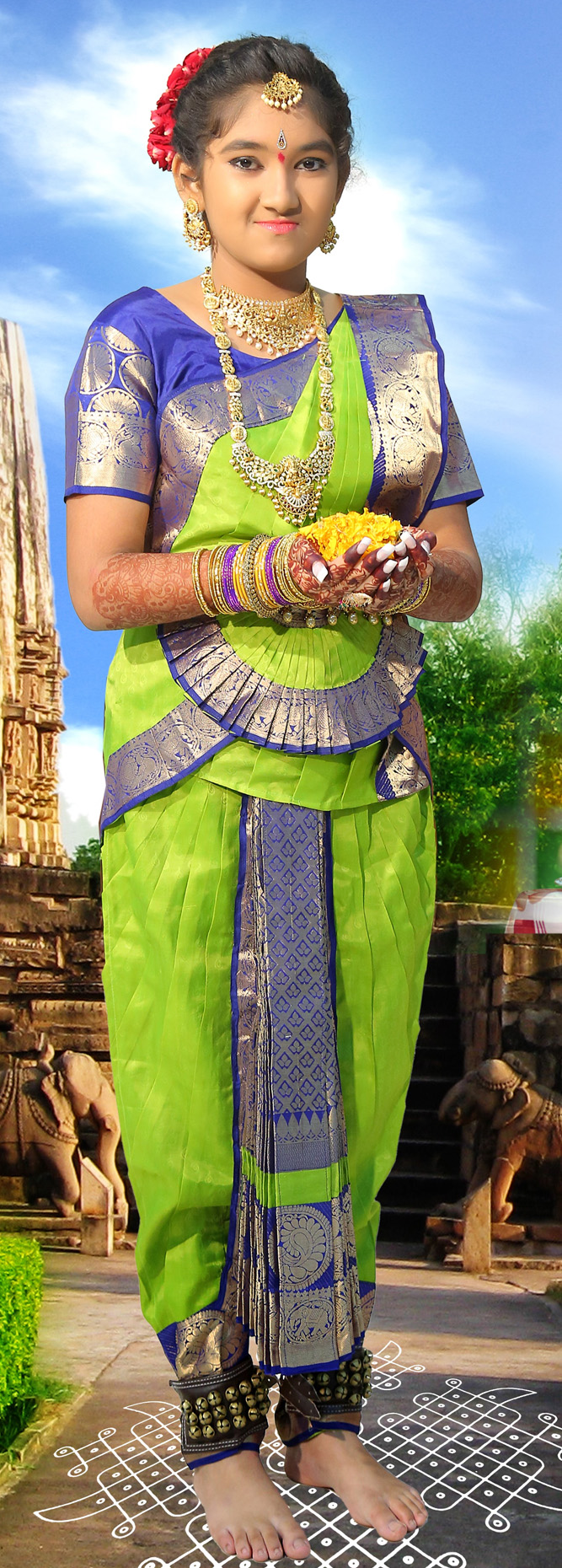
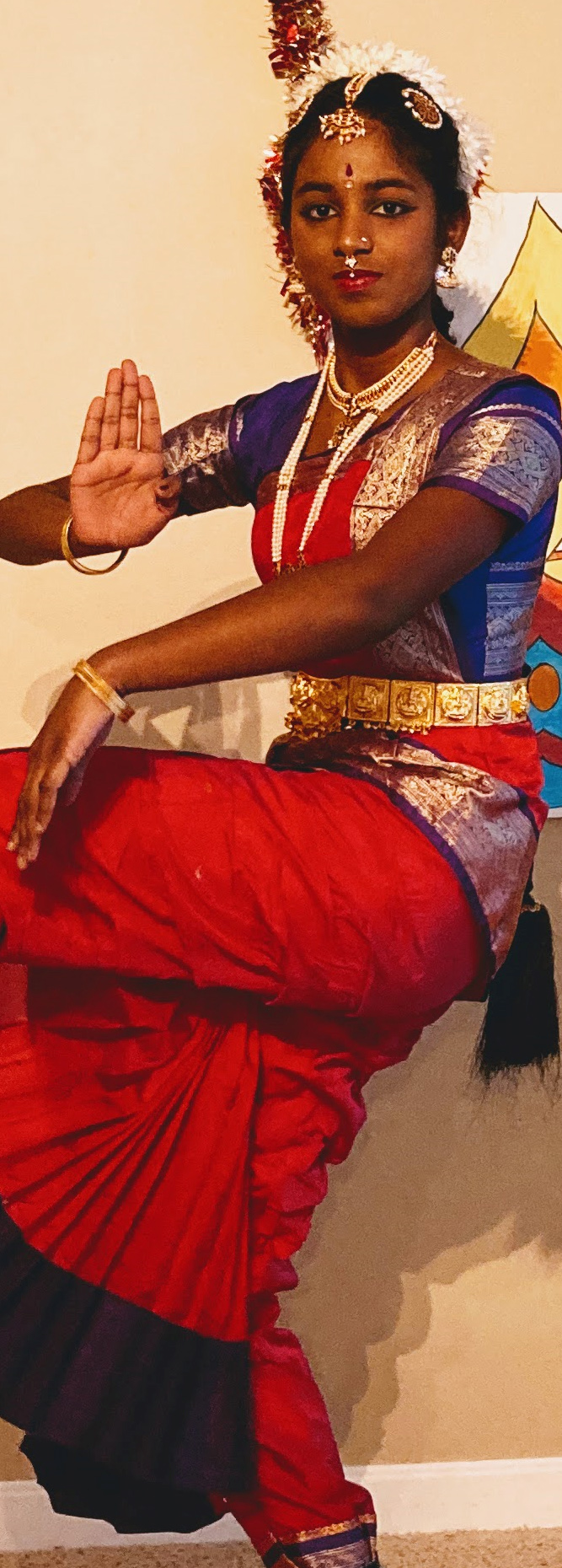
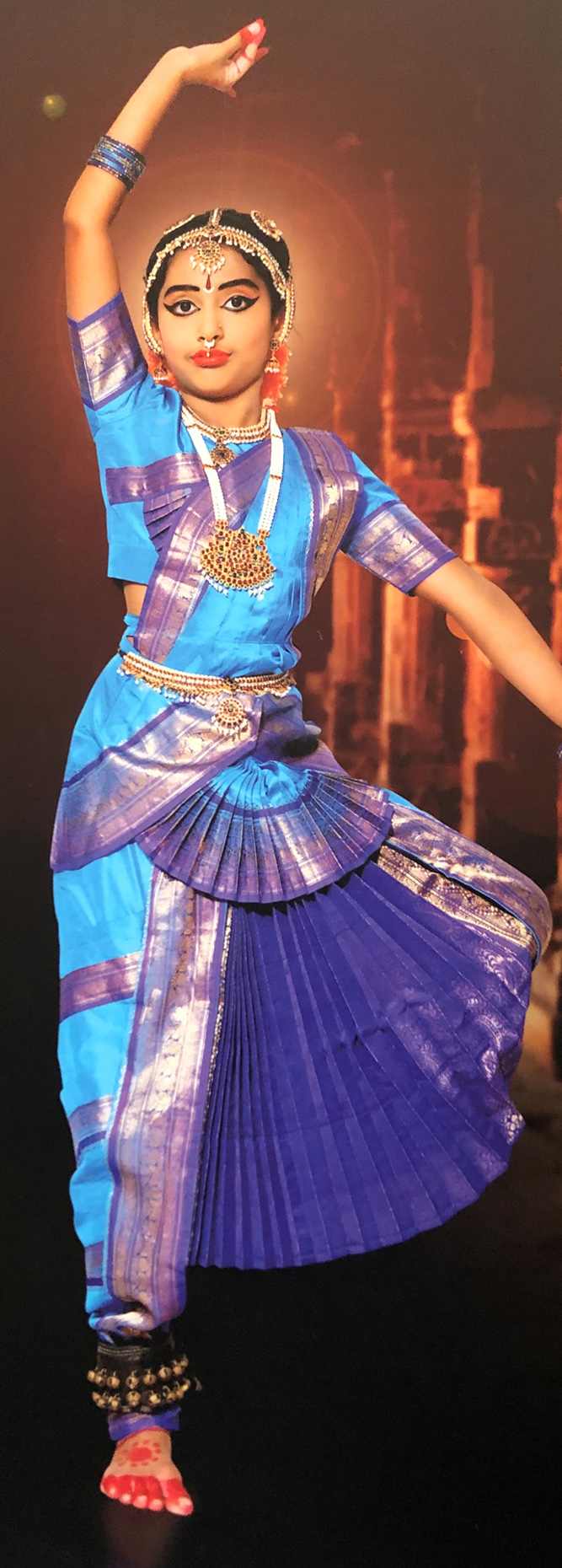
Program
Venue: Hindu Temple Cultural Center Auditorium - (HTCC) - 725 Weidman Road, Manchester, MO 63011
Date and Time: Saturday, November 20th, 2022 - 3:00 Pm - 6:30 PM
Gananam
Tabla virtuoso Pundit Kishan Maharaj is known for his extra-ordinary skills in rhythms. His famous Ganesh Paran will be used in inauguration number for “Festival of Lights’. It’s about praising Lord Ganesha who plays Mridangam while performs dances. Kathak dancers – Ananya and Vidhi will present this beautiful number ending with a small Tukda.
Alaripu
Alaripu is an opening piece for Bharathanatyam dances. It introduces the essential movements, positions and one basic rhythm of the Bharathanatyam. It blooms to open the stage into beautiful world of dances. This is performed by Akshaya Boopathi, Deepshika Pasumarti, Sahasra Dandamudi, Brinda Mudduluri, Dhruti Kondamadugula, Harini Saravanan, Kaavya Panchal, Nidhisha Pejathaya and Kirthi Ramesh.
Maatha Kaalika
Kaalika is the divine mother who protects the pious and righteous, destroying the evil demons who are against Dharma. Maatha Kaalika takes up sword to demolish the threat of evil Mahishasura. She removes the fear of material pain and thus called Bhavani. Performed by Aarini Pareek
Ganapati Kauthuvam
A Kauthuvam is a rhythmical poetry. This Kauthuvam is an ancient composition in praise of God Ganesh ji. Devotees pray Ganesh to get rid of all obstacles. This is performed by Akshaya Boopathi, Deepshika Pasumarti, Sahasra Dandamudi, Brinda Mudduluri, Dhruti Kondamadugula, Harini Saravanan, Kaavya Panchal, Nidhisha Pejathaya and Kirthi Ramesh.
Nagendra Haaraya
Adi Shankara, a saint from 8th century described a force of nature in to Shiva through the wonderful - chant - Na ma Shi Va ya. These five syllables are very powerful as it touches the core of creation itself. This song expands the meaning 'Nama Shivaaya" into a 5-stanza lyric called "Shiva Panchakshari sthothram". This is performed by Mridini Nandakumar, Shreenidhi Senthilnathan, Kirthi Ramesh, Adithi Yerrapu, Ashritha Akkaladevi and Sai Yarasi.
Jatiswaram
Jatis are rhythmical patterns set up to a pre-defined meter. In this case it is set to 8 count – meter called Adi taalam. This has 8 Jatis set to different musical notations. This Jatiswaram is in melody called Deva Manohari – performed by Dhruti Kondamadugula, Harini Saravanan, Kaavya Panchal, Nidhisha Pejathaya, Ananya Singh, Sahasra Muddu, Kirthi Ramesh, Meenakshi Kadungath, Bhavya Mudduluri and Mridhini Nandakumar.
Indendu Vachitivi raa
This is a Kshetragna Padam, written in 17th century, portrays beautiful abhinaya of an irritated lover, who is upset with her beloved, who she sees going to another woman’s place. The song goes like this: Why have you come here? There, that woman does not reside here, in this street. go, go away. Our MuvvagopAla, who carried mount Mandara, have you come here to win over the heart of the girl with teeth like jasmine buds?
In the enhanced moonlight, unaware of the location of the house, have you come in contact with the fish eyed girl? and lost yourself? I am not the girl who brought solace to your heart, holding, embracing you, with familiarity.
with increased passion, you look {at me} with longing in your eyes. You are not going away from me. what is this? No, No, Go away. You join in cupid’s game, make my passion for you increase twofold. It is daybreak, wake up. All the womenfolk will glance at you. {c3}
Ladies and gentlemen – abhinaya by Anjali, Ananya and Niharika present Indendu vachchitivira.
Raag & Roll
This is a dance in joy by our little dancers. They will be showcasing their moves to the music with joy and fun. This music is by Viji Krishnan. Performed by Thansika Lakshminarasimhan, Aditi Kini, Adithi Boggarapu, Sai Sanjana Ramgopal, Anvi Patel, Lakshmi Kadungath and Anvitha Kaluvala.
Chintayaami Jagadamba
Mysore Maharaja Chamaraja Wodeyar has composed this beautiful song on Goddess Chamundeshwari, who is the Royal deity of Mysore Kingdom. The poet says – please meditate on mother of universe, who is the destroyer of Chanda and Munda demons. She is the embodiment of truth and knowledge. She is the light of learning, who is praised from great saints like Tambura, Naarada and others. This is in 10 beat taalam – called Mishra Jati Jhampa taalam and is in Raaga Hindola. Performed by Aditi Sriram, Divya Arun, Ashrita Akkaladevi, Anjali Noel Ramesh and Shreenidhi Senthilnathan.
Jhoolath Radha
A gem from Meera Bai, a legendary North Indian saint and a great Krishna devotee. Her songs are a household song even after 600 years. Jhoolath Radha presents a beautiful scenery of eternal lovers Radha and Krishna playing with Swing in the garden. They play with Holi colors and enjoy the beautiful spring. Performed by Riti Shahapeti, Henna Soneta and Aaheli Arora.
Flirting with Flute
This is a music from The Fusion Artist: John T Keats from the album Flirting Flute – Leela. The Kathak bols are interspersed to create a new aura in the Kathak fusion dance. It showcases the beautiful moves with new bols. This is performed by Ashna Jain, Aanya Kaushik, Namita (Tara) Rai, Hamal Sabina, Divya Sinha, Anushka Rausaria, Suparba Panda, Souravi Upadhyay, Saanvi Upadhyay, Hetal Patel and Vidhee Soneta.
Ekambareshwara Shabda
Mysore style of dancing has its own traditional items like Prabhandha, Shabda, Choornikas, Javalis. Ekambareshwara Shabda is a famous dance created in 1930s by veteran Guru – Jatti Taayamma. This is in praise of Lord Shiva, who is praised as Eka Ambara Linga, the one who is wearing sky as a cloth. This is performed by all senior and advanced students of Bharathanatyam school.
Geluvu Geluvu
This is a part of Sapthapadi or 7-stanza poetry from 16th century Geetha Gopala. This narrates the childhood of Lord Krishna. His miracles of saving friends from the wrath of dangerous serpent – Kaaliya. This is in Khanda Chapu (5 beats) and Raagamaalika. Performed by - Ananya Sharma, Bhavya Mudduluri, Hritika Malugu.
Durga
Durga represents the power of justice and righteousness. Her infinite power overcomes the evil forces and establishes the rule of law. Navaratri is a festival celebrated in Indian subcontinent for 9 nights signifying 9 forms of Goddess Durga, one of them being a force that destroys the deadly demon “Mahishasura”, which spiritually equates to our own inner evil qualities we possess. The dance Durga celebrates mother Goddess as the one who removes suffering and help cross the ocean of “Bhava” (material miseries). Performed by Deepshika Banerjee, Aarini Parikh and Henna Sonata
Intermission
Vandana Trayee
Bharatha Rathna Pundit Ravishakar ji is an eternal shining star in the vast ocean of enchanting music. His composition Vandana Trayee has inspired millions. We have taken this beautiful music and enjoyed dancing for a long time now. This dance prays three major god heads. The first one is Ganesh ji, second would be Sarasvati - goddess of learning and third one is Guru – the eternal teacher. This is performed by Agrima Agrawal, Avanthika Nair, Diya Patel, Havisha Arunmurthy, Pragnya Sridhar, Prarthana Rajesh, Prithika Saie Sampath Kumar, Rushika Padamati, Sai-Saanvi Katarla, Akshaya Boopathi, Deepshika Pasumarti, Sahasra Dandamudi.
Deepavali (Diwali) Special Dances
The festival Deepavali (Diwali) is celebrated in three days in India. Starts on the 14th day of Fortnight – celebrated as Naraka Chaturdashi; New Moon is dedicated to worship Lakshmi, Goddess of wealth and 1st day of fortnight – Bali Paadyami – celebration of Victory of Vaamana over Bali. We will be presenting two stories of Deepavali in this show.
Bali Moksha
Bali was the grandson of Prahalada, who guided him to engage himself in the service of universe instead of his own ambitions. Bali agreed with his grandfather and become still more virtuous and benevolent. As the time grew, he became strongest in the universe. He became ambitious, after he owned everything on Earth. Now, Bali decided to conduct one hundred Aswamedha Yagnas in Kurukshetra, to become Indra or king of Gods. A human or demon becoming king of Gods was not in the right way. Bali did not wish to wage war, but to the ritual way. His Guru Shukracharya assisted him in all the 99 Ashwamedha Yagnas. By this time, the spiritual energy of Bali was so strong no one could stop him. All the Gods sought help of Vishnu. Vishnu decides to take incarnation as a boy with Aditi as his mother. Vaamana goes to Bali’s place.
At this time Bali was about to finish his 100th Yagna. He is supposed to treat Brahmins and others with alms. When he sees little Brahmin Vaamana, he welcomes him with his full heart. Vaamana being impressed by the grandeur of Bali’s Yagya and compliments him. Bali requests Vaamana to reveal the reason of his arrival and promised that his wishes would be fulfilled. Vaamana smiled and told him that he needed a small piece of land measured by three steps for the performance of Yagya.
Bali was surprised by this demand and requested him to ask for more land, but Lord Vaaman told him that he needed only that much land. Bali agreed and took a vow to donate a piece of land measured by three steps.
Hardly had Bali taken his vow, when suddenly Lord Vaaman expanded his size. His first step covered the whole earth. By his two successive steps, he covered the two worlds. This way, Bali was forced to donate all the three worlds according to his vow
He blessed Bali by saying- "You would enjoy a long life till the end of this present Kalpa. You would hold the post of Indra till the arrival of Saavarni Manavantar”. Thus, Bali was awarded the status of Indra to the nether world named Sutal for a temporal stay till the Indra of that age to complete his term.
The songs are taken directly from 4000-year-old Bhagavatham. This was composed and sung by late Jahnavi Jayaprakash
Ashta Lakshmi Vaibhavam
Lakshmi is commonly known as the Goddess of wealth. Wealth is not only money. Tradition and values of life are also wealth. And so is our family and success in life. Our belongings such as land, properties, animals, grains as well as virtues like patience, persistence, purity in the form of a character are nothing but our wealth and so is glory or victory.
This eightfold shloka or verses on Sri Lakshmi known as Sri Ashta Lakshmi is presented today as following
- Aadi - Lakshmi
Aadi-Lakshmi is often depicted as the consort of Narayana, living with him at his home in Vaikuntha, or sometimes seen sitting in his lap. Her serving of Lord Narayana is symbolic of her service to the entire universe. Aadi-Lakshmi is portrayed as four-armed, holding a lotus and a white flag in her two hands while the other two are in abhaya mudra, in which the right hand is held upright, and the varada mudra, in which the right palm is held out with the fingers pointing down.
- Dhana-Lakshmi
Dhana means wealth in the form of money or gold. At an intangible level, it may even mean inner strength, willpower, talent, virtues, and character. Thus, the name Dhana-Lakshmi represents this aspect of the human world, and by her divine grace, we can get abundance of wealth and prosperity.
- Dhanya-Lakshmi
The third of the eight forms of Ashta-Lakshmi is named after Dhanya or food grains, full of natural nutrients and minerals required for a healthy body and mind.
- Gaja-Lakshmi
who was born out of the churning of the ocean, the fabled Samudra Manthan of Hindu mythology, is the daughter of the ocean. Myths have it that Gaja-Lakshmi helped Lord Indra regain his lost wealth from the depth of the ocean.
- Santana-Lakshmi
This form of Lakshmi, as the name suggests (Santāna means offspring), is the Goddess of Progeny, the treasure of the family life. Worshipers of Santana-Lakshmi are bestowed with the wealth of good children possessing good health and a long life.
- Dhairya-Lakshmi
As the name suggests (Dhairya means valor or courage), this form of Goddess Lakshmi is the bestower of courage, strength, and power. Dhairya-Lakshmi is worshiped to gain valor and strength to overpower formidable adversaries in war or simply to overcome the difficulties of life and ensure a life of stability.
- Vidya-Lakshmi
Vidya means knowledge as well as education, not just degrees or diplomas from the university, but real all-round education. Thus, this form of Goddess Lakshmi is the giver of knowledge of the arts and sciences.
- Vijaya-Lakshmi
Vijaya means victory and this form of Goddess Lakshmi symbolizes victory in all aspects of life, not just in war, but also in life's major struggles and little battles. Vijaya-Lakshmi is worshiped to ensure all-around victory in every aspect of life.
Performed By: Aditi Sriram, Diya Arun, Hritika Malugu, Meenakshi Kadungath, Mridini Nandakumar, Revathy Vishnubhotla, Shreenidhi Sendhilnathan, Sona Prabhakaran, Akshaya Nalluri, Neha Patlu, Saanvi Ramgounda, Niharika Sanjeeva, Arshya Pillai, Sahasra Muddu and Ashritha Akkaladevi.
Megha – Rain Dance
Rain is an important part of our lives. This dance is dedicated to this element of nature. Music is beautifully composed by Bikram Ghosh in his Album – Drum Invasion. This is choreographed innovatively by Guru Prasanna Kasthuri. This is performed by Aanya Kaushik, Vidhee Soneta, Riti Shehapati, Henna Soneta, Deepshika Banerjee and Aaheli Arora.
Deepavali - Diya Dance
A music-dance-ode to the spirit of knowledge, a dedication to light and to power of envision. This dance goes through beautiful movement with hand-held lamps. Just a beautiful dance. Music is by veteran Santoorist - Rahul Sharma. Performed by Niharika Sanjeeva, Anjali Noel-Ramesh, Ananya Sharma, Harini Saravanan, Ananya Singh and Kirti Ramesh.
Courtesy
Sound & Lighting: Vikram Kini and Nagendra
Stage Tech: Chinnayya
Tickets: Nagendra and Sriram
Choreography: Guru Prasanna Kasthuri
Singers: Seema Kasthuri, Prasanna Kasthuri, Jahnavi Jayaprakash